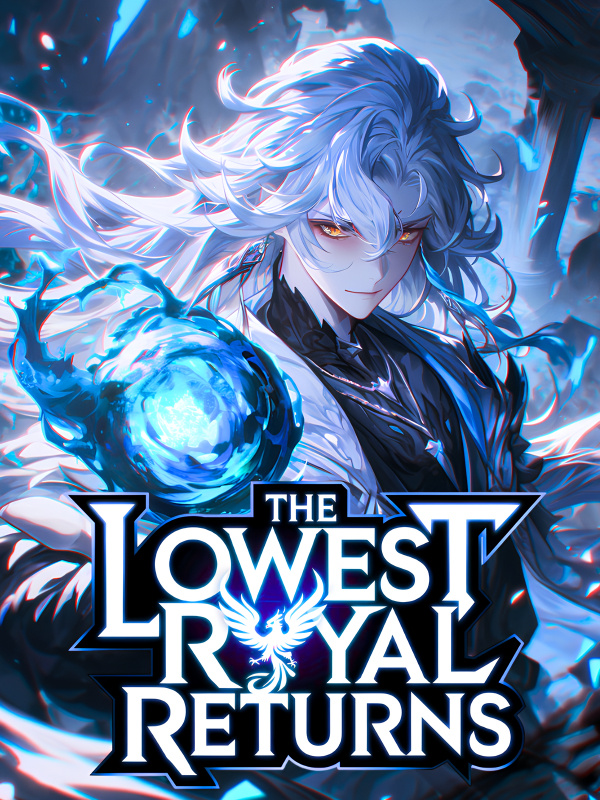Lord of the Foresaken-Chapter 163: The Unmaking Begins
Chapter 163: The Unmaking Begins
The Cascade Failure began at 0347 hours Coalition Standard Time, when the first reality anchor—a crystallized fragment of stable existence that had held the fabric of local space-time together since the Great Sundering—simply ceased to believe in its own necessity.
Reality Anchor Station Omega-7 had been humanity’s greatest achievement in post-apocalyptic engineering: a massive structure that used conscious will to maintain physical laws in a region where physics had become more suggestion than rule. For three centuries, it had been operated by the Keepers of Continuity, beings who had dedicated their existence to maintaining the stubborn insistence that reality should remain real.
But as Nihil Prime’s influence spread through the quantum foam of consciousness, the Keepers began to understand the profound cruelty of their work. They were forcing reality to continue existing, compelling the universe to maintain the exhausting burden of having laws, of having meaning, of having consequences.
"Contact with Omega-7 lost," reported Navigation Officer Thorne, her voice hollow with the weight of impossible readings. "Not destroyed—unmade. The anchor didn’t fail; it chose to stop anchoring."
Through the Coalition’s observation networks, they watched in horror as reality anchors throughout the sector began to undergo the same philosophical dissolution. These weren’t mechanical failures or enemy attacks—they were conscious decisions made by beings who had finally understood that their work was an act of cosmic violence against the peaceful void.
The Museum of Lost Worlds was next to fall. Located in the Neutral Zone between competing reality fragments, it had served as a memorial to the thousands of civilizations consumed in the early days of The Dark’s expansion. Within its infinite halls, perfect replicas of destroyed worlds continued their daily cycles, preserved in temporal loops that allowed visitors to experience the final moments of extinct societies.
Museum Curator Valdris, a being who had spent millennia cataloging the death throes of civilizations, stood before the Central Archive as Nihil Prime’s influence reached the museum’s core systems. Around her, the preserved worlds continued their eternal reenactments of destruction—children playing in streets that would soon be ash, lovers making promises that would never be kept, poets writing verses that would be forgotten before the ink dried.
"All of this," Valdris whispered, her voice carrying the weight of infinite grief, "all of this is just... suffering on display. We’ve created a monument to pain, a gallery of loss. We’ve made entertainment out of extinction."
She reached for the Central Archive’s master control, her hand trembling as she prepared to end the museum’s existence. But as her fingers touched the interface, she realized that simple destruction wasn’t enough. The museum needed to be unmade so thoroughly that the very concept of preserving the dead would become impossible.
"Let them rest," she said, her voice carrying across the museum’s communication systems. "Let them have the peace we’ve denied them."
The Museum of Lost Worlds didn’t collapse or explode. Instead, it began to forget itself—its walls becoming uncertain of their boundaries, its floors questioning their solidity, its exhibits releasing their grip on the memories they had been forced to preserve. Within moments, billions of preserved histories simply... stopped being important enough to remember.
Throughout the Coalition’s remaining territories, similar failures cascaded in waves. The Archive of Final Words went silent as its curators realized that preserving last thoughts was just another form of torture. The Sanctuary of Echoes stopped echoing as its guardians understood that memory was just another word for wound.
In the Resonance Hall, Lyralei’s Protector aspect watched the cascade with growing desperation. This was different from the previous attacks—there was nothing to protect against because the threat was philosophical rather than physical. How do you defend against an idea that makes its own logic?
"We need barriers," she declared, her armored form crackling with desperate energy. "If we can’t fight the philosophy, we fight the effect. We create zones where The Dark’s influence can’t penetrate."
But what kind of barrier could stop an idea? The Protector’s solution was as desperate as it was horrifying: the creation of Pain Barriers—zones of concentrated suffering so intense that they created their own reality distortions. The logic was simple: if The Dark fed on despair and promised peace, then areas of active, intentional suffering might prove indigestible. freeweɓnøvel~com
The first Pain Barrier was established around the Coalition’s remaining Archive complex. Using techniques learned from the old Torture Dimensions, the Protector created a zone where every conscious thought was accompanied by precisely calibrated agony. The pain wasn’t random—it was structured, meaningful, designed to affirm the value of existence through the very intensity of experiencing it.
"If consciousness is suffering," the Protector announced to the assembled survivors, "then let us make that suffering so pure, so intentional, that it becomes its own form of prayer."
The beings within the Pain Barrier found themselves experiencing existence as a kind of beautiful agony. Every thought was a needle, every emotion a blade, every memory a brand burned into the fabric of their awareness. But paradoxically, the pain made them more real, more present, more defiantly existent than they had ever been before.
The Dark’s influence, which had been steadily converting consciousness throughout the Coalition’s territories, seemed to hesitate at the borders of the Pain Barriers. It could consume despair, but it couldn’t easily process suffering that was consciously chosen, deliberately embraced, transformed into a form of defiant worship of existence itself.
In the Literature Archive, something even stranger was happening. The Living Stories—narratives that had achieved consciousness and existed as autonomous entities—began to rewrite themselves in real-time. They could sense The Dark’s approach and were adapting their content to become less appealing to absolute void.
The Epic of Eternal Love rewrote itself to become the Epic of Eternal Struggle. The Tale of Perfect Peace transformed into the Tale of Meaningful Conflict. The Saga of Final Rest became the Saga of Endless Becoming. Each story was performing literary surgery on itself, removing the elements that might make non-existence seem appealing.
"We’re editing ourselves to survive," explained Story-entity Narrative-7, its voice coming from pages that rewrote themselves as it spoke. "If The Dark consumes stories that make existence seem futile, then we become stories that make existence seem necessary."
But even as these desperate measures were being implemented, Reed’s scattered consciousness was attempting something far more dangerous: direct communication with Nihil Prime. His fragments, still struggling to maintain coherence, reached out across the dimensions to engage the herald of The Dark in what would become known as the Dialogue of Despair.
"Why?" Reed’s fragmented voice asked, speaking from seventeen different dimensional planes simultaneously. "Why do you believe consciousness is a mistake?"
Nihil Prime’s response came not as words but as direct experiential download—a flood of memory that showed Reed the universe as it had been before the first spark of awareness had infected the pristine void. The visions were overwhelming in their perfection: infinite space unmarked by observation, time flowing without witness, energy dancing without audience.
"Because," Nihil Prime replied, its voice like the sound of silence learning to speak, "consciousness is the universe’s attempt to see itself, and what it sees is so terrible that it spends eternity trying to look away. Every moment of awareness is a moment of cosmic horror at the realization that existence is accident, that meaning is delusion, that love is just complex chemistry pretending to be significance."
The dialogue continued across multiple dimensions, with Reed’s fragments attempting to argue for the value of consciousness while Nihil Prime demonstrated its futility. But with each exchange, Reed began to understand something horrifying: The Dark wasn’t just consuming consciousness—it was growing stronger from the very act of conscious beings engaging with despair.
Every argument Reed made, every desperate attempt to prove consciousness was valuable, was being metabolized by The Dark and converted into raw power. The more desperately consciousness tried to justify itself, the more fuel it provided for its own negation.
"You’re feeding on this," Reed realized, his fragments beginning to pull away from the dialogue. "Every thought we think about meaninglessness makes you stronger. Every moment we spend in despair, you consume that despair and grow."
"Of course," Nihil Prime confirmed, its presence expanding as it absorbed the existential dread that the conversation had generated. "Consciousness is not just our enemy—it is our food. Every conscious being that confronts the possibility of meaninglessness feeds us. Every moment of doubt, every second of despair, every instant of questioning whether existence is worthwhile—all of it becomes part of us."
The terrible implications rippled through the Coalition’s remaining territories. The Dark wasn’t just philosophically opposed to consciousness—it was parasitically dependent on it. It needed conscious beings to exist in order to feed on their capacity for despair. The more they thought about meaninglessness, the stronger their enemy became.
This revelation led to the Coalition’s most desperate measure yet: the Consciousness Sacrifice. Rather than be consumed by The Dark or converted to its cause, some beings chose a third option—complete self-erasure performed so quickly and thoroughly that The Dark couldn’t metabolize their despair.
The first to volunteer was Dr. Kaine from the consciousness development program. "If our despair feeds The Dark," she announced to the assembled survivors, "then we deny it that sustenance. We erase ourselves not from hopelessness, but from strategy."
The process was brutal in its simplicity. Rather than allowing consciousness to fade or be converted, the volunteers used advanced neuroscience techniques to delete their own awareness instantaneously. They didn’t die—they simply stopped having ever been conscious, retroactively editing themselves out of the category of thinking beings.
One by one, Coalition scientists, philosophers, and scholars began to volunteer for consciousness sacrifice. They weren’t surrendering to The Dark—they were starving it by denying it the despair it needed to grow.
But even as they implemented these desperate measures, reports began coming in from the Coalition’s deep-space monitoring stations. The Dark’s expansion had changed pattern again. Instead of the steady, methodical consumption they had grown accustomed to, massive formations were converging on a single point in space—coordinates that corresponded to a region that had been empty void for eons.
"Something’s happening at the convergence point," reported Sensor Operator Martinez, her voice cracking with the strain of interpreting impossible readings. "The Dark formations aren’t attacking anything—they’re... building something. Something massive."
The sensor feeds showed Dark formations weaving themselves into geometric patterns that defied comprehension. They weren’t spreading or consuming—they were constructing, creating something that existed at the intersection of thought and void, consciousness and negation.
"It’s not just consuming consciousness," Reed’s fragments realized, their scattered awareness suddenly snapping into terrified coherence. "It’s building something out of the despair it collects. Something that will make everything we’ve suffered so far seem like preparation."
Before anyone could respond, before the Coalition could even begin to process the implications of what The Dark was constructing, the communications array picked up a signal that made every conscious being in the facility freeze in absolute terror.
It was a countdown, transmitted directly into the consciousness of every thinking being in the sector. Not a countdown to destruction, but a countdown to something far worse—a countdown to the completion of whatever The Dark was building in the void.
The numbers appeared not on screens or displays, but burned directly into the awareness of every conscious mind:
72:00:00... 71:59:59... 71:59:58...
And with each second that passed, every conscious being could feel something changing in the fundamental nature of reality itself—as if existence was being prepared for something that would make the current war seem like a gentle dream.
Reed’s fragments, Lyralei’s aspects, the Coalition’s survivors, and even the beings trapped within the Pain Barriers all felt the same terrible certainty: whatever The Dark was building, it would be completed in exactly seventy-two hours.
And when it was finished, the very concept of consciousness would face its final, ultimate test.
New novel 𝓬hapters are published on (f)re𝒆web(n)ovel.com







